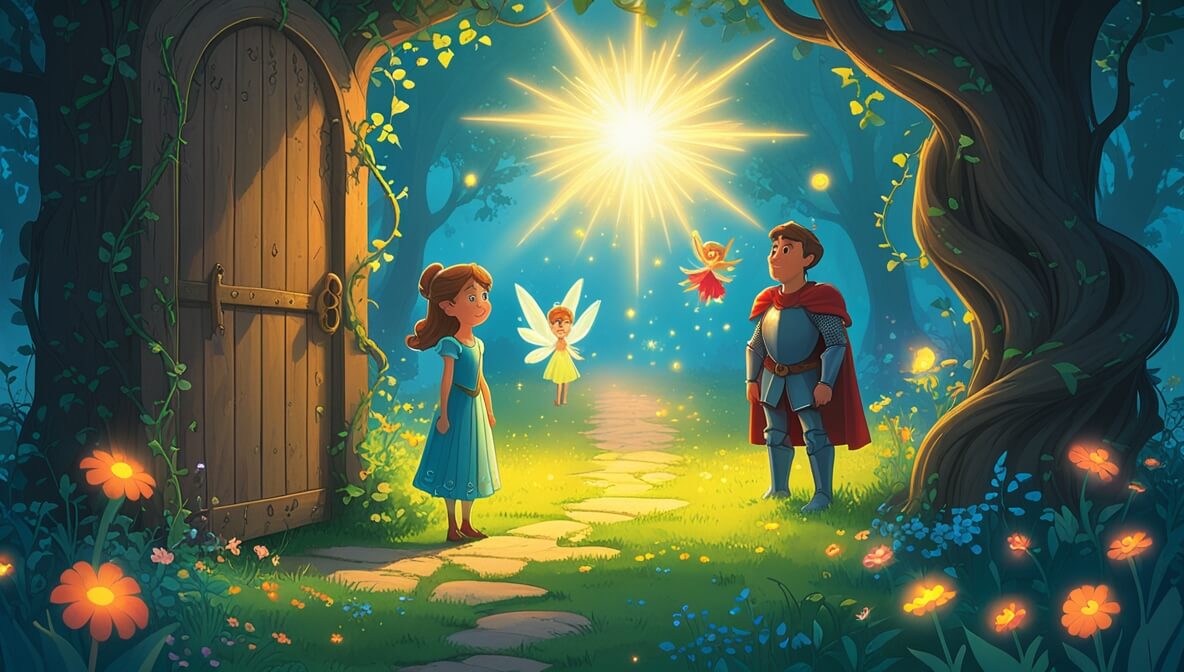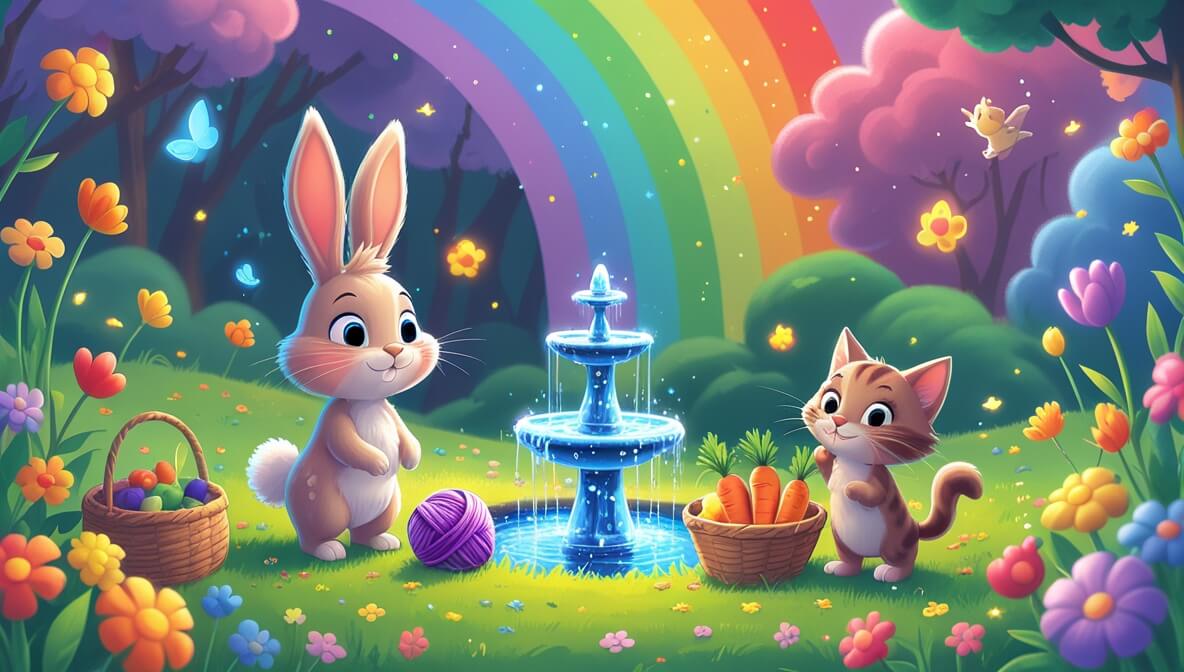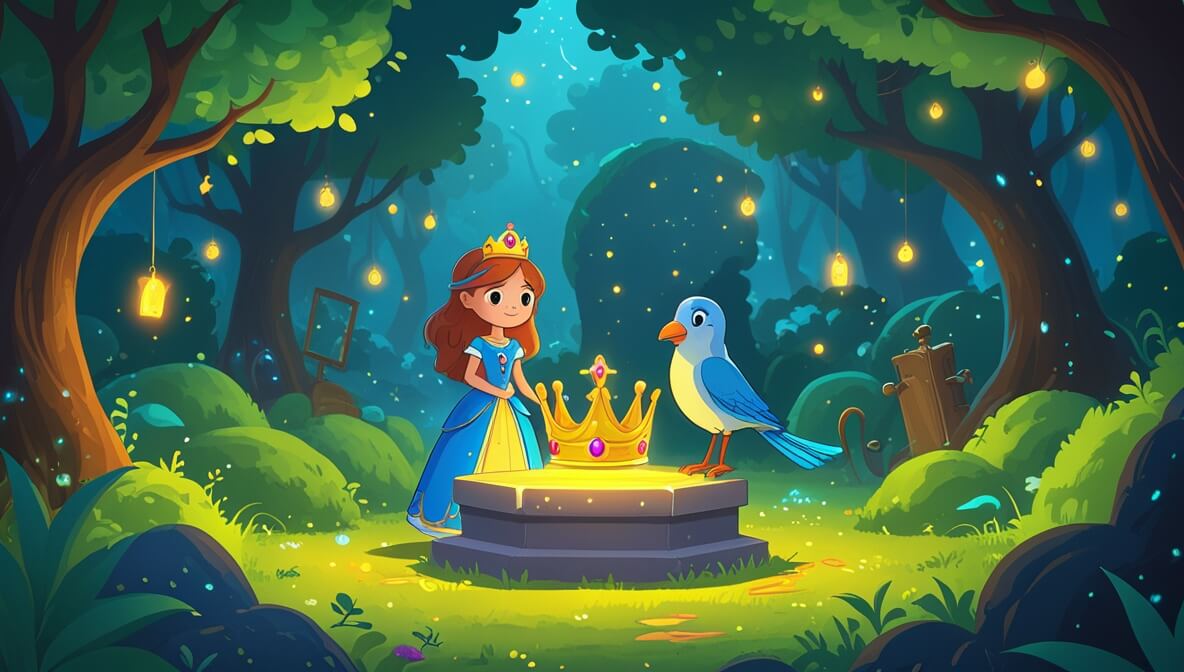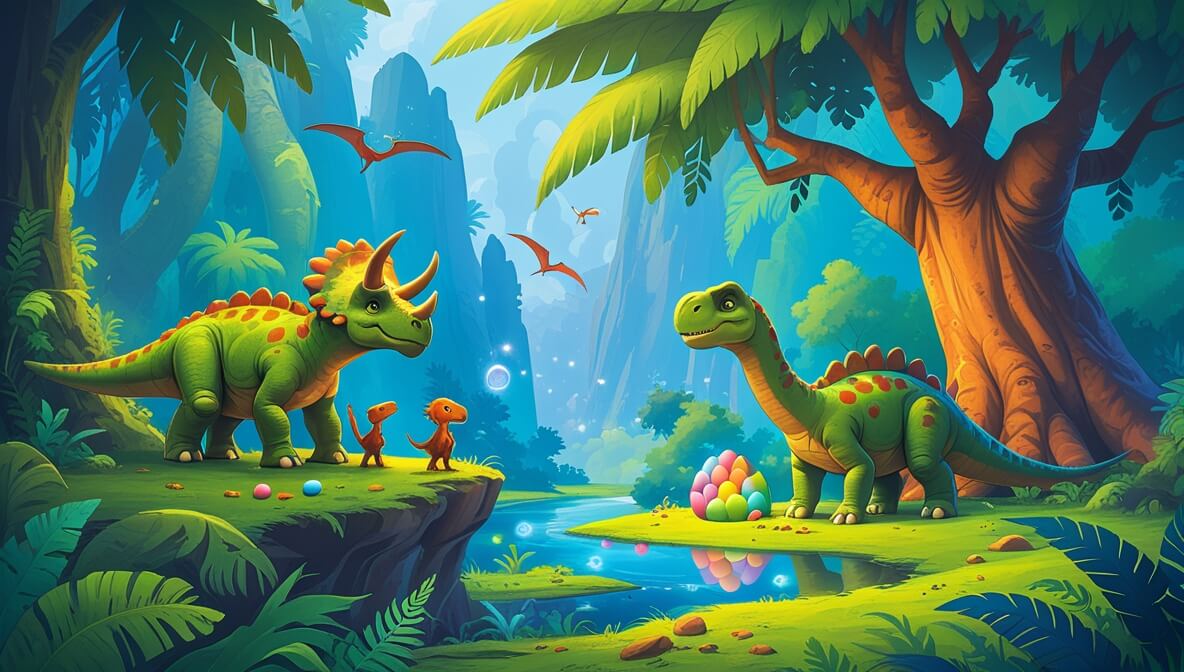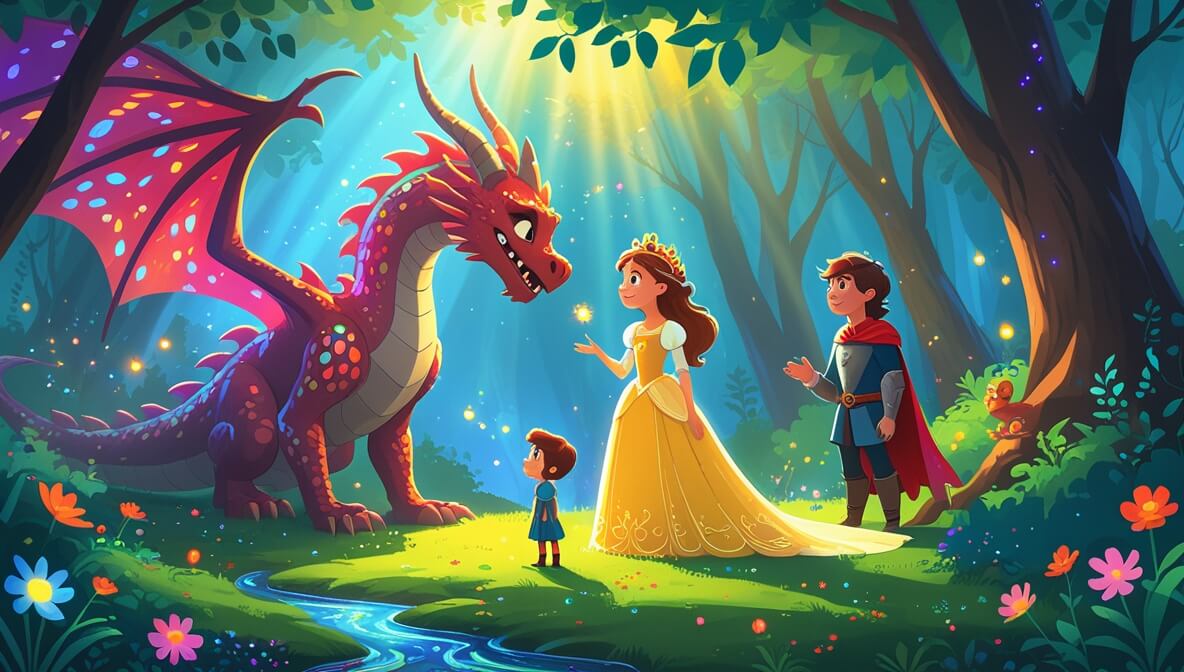In a magical forest, a little teddy bear named Cuddles goes on a journey to find the lost moonbeam. With the help of a friendly firefly, they discover the power of friendship and light up the night.
Age Recommendation
0 – 4 years
Characters
Characters:
- Cuddles: A soft, brown teddy bear who loves to explore.
- Glimmer: A bright and cheerful firefly who lights up the way.
Story
Once upon a time in a magical forest, there lived a little teddy bear named Cuddles. One night, while looking at the stars, Cuddles noticed something was missing. The moonbeam that usually danced on the trees was gone! Feeling curious, he decided to find it.
The quest begins
As Cuddles walked through the forest, he met Glimmer, a friendly firefly. “Hello, Cuddles!” Glimmer buzzed. “Why do you look so worried?” Cuddles replied, “The moonbeam is missing, and I must find it!” Glimmer offered to help, saying, “Let’s light up the forest together!”
Through the twinkling trees
With Glimmer’s light guiding them, they ventured deeper into the forest. The trees seemed to dance as Glimmer’s light flickered. Suddenly, they heard a rustle behind a bush. It was a sleepy rabbit who said, “I saw the moonbeam resting near the sparkling pond.”
The magical pond
Excited, Cuddles and Glimmer hurried to the pond. There, they found the lost moonbeam shimmering on the water’s surface. “We found it!” Cuddles cheered. Glimmer smiled and said, “Together, we brought the light back to the forest.”
Shining brighter
As the moonbeam rose to the sky, the forest glowed with sparkles. Cuddles hugged Glimmer and said, “Thank you, Glimmer. We couldn’t have done it without each other.” And with that, the moonbeam danced again on the trees, making everything feel warm and bright.
The end.
Moral of the Story
Friendship and working together can brighten even the darkest nights.
Questions to Think About
- Why was Cuddles sad at the beginning of the story?
- How did Glimmer help Cuddles find the moonbeam?
- What did they find at the sparkling pond?
- How did the forest change when the moonbeam was found?
- What would you do if you had a firefly friend like Glimmer?
Do You Know
- Fireflies use their light to talk to each other and find friends!
- The moon reflects the light of the sun, making it glow at night.
Word Explorer
- Moonbeam: A ray of light from the moon.
- Firefly: A small beetle that lights up in the dark.
- Shimmering: Sparkling or shining with a soft light.
Emotions in the Story
- Curiosity: When Cuddles noticed the missing moonbeam and wanted to find it.
- Friendship: When Glimmer offered to help Cuddles on his quest.
- Joy: When they found the moonbeam and saw the forest glow again.
Color Your Scene
Imagine the moment when Cuddles and Glimmer found the moonbeam at the sparkling pond. Draw the twinkling trees, the shimmering water, and the bright moonbeam rising to the sky. Use colors like bright yellow for the moonbeam, soft blue for the pond, and green for the trees.
Parents’ Corner
This story is a wonderful way to talk with your child about:
Friendship: Discuss how Cuddles and Glimmer helped each other and why having friends is important.
Cooperation: Talk about how working together helped them find the moonbeam.
Curiosity: Encourage your child to explore and ask questions about the world around them.
Nature’s beauty: Share the wonders of forests, ponds, and the nighttime sky with your child, fostering a love for nature.






